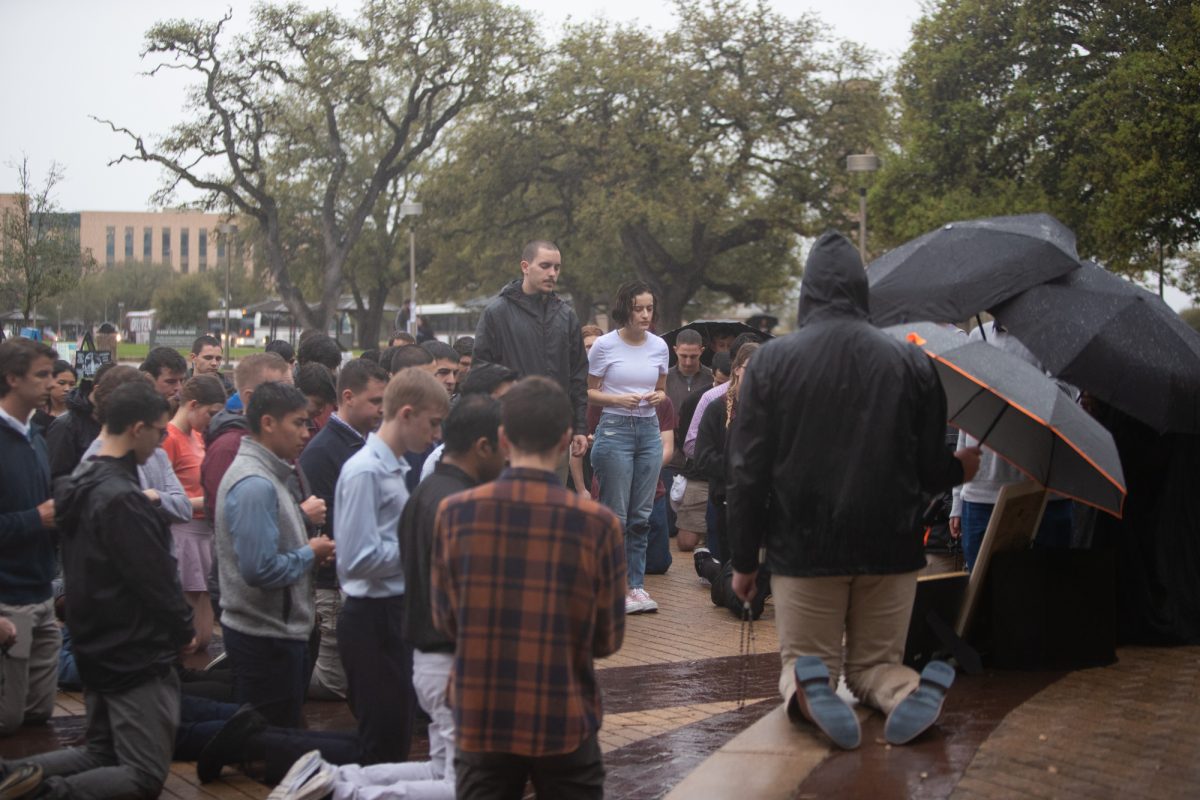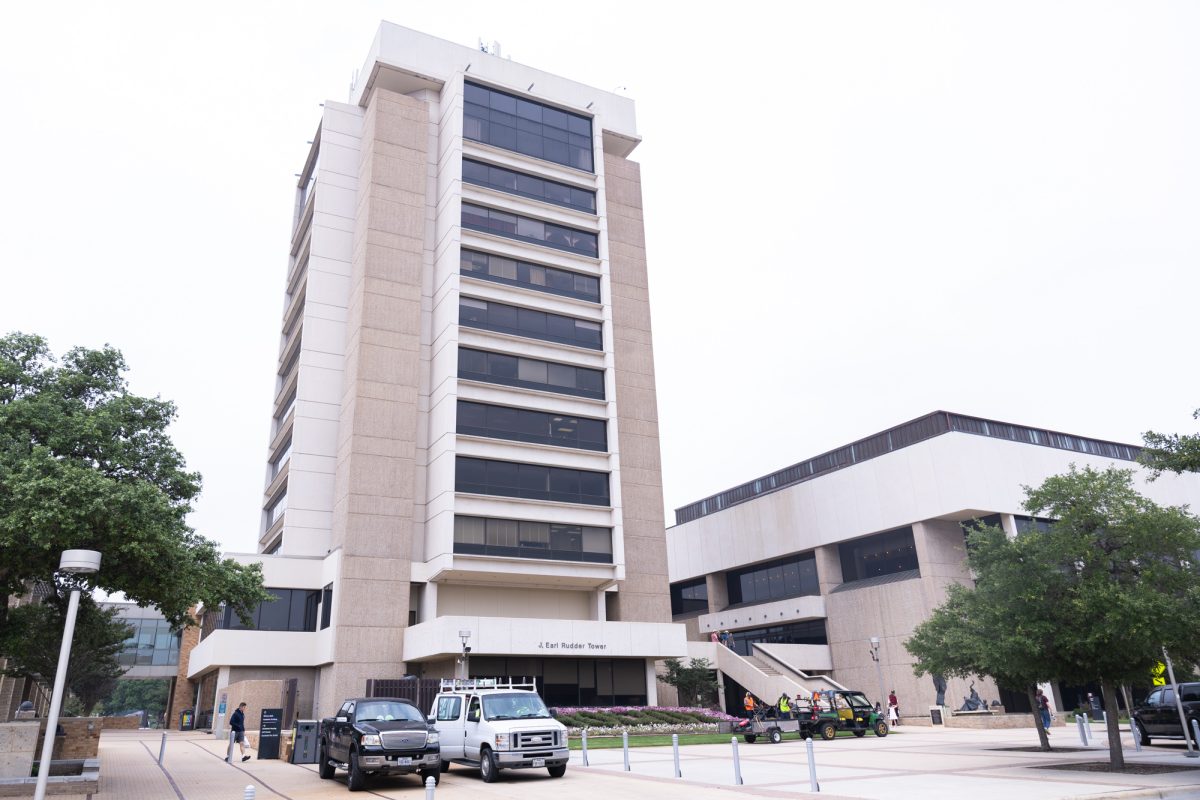The Brazos County Health District (BCHD) updated the public on the current state of COVID-19 in the area.
Brazos County Health Authority Dr. Seth Sullivan began the conference with the latest numbers in the county. There have been a total of 4,550 total positive cases, 4,093 recovered patients, 54 deaths and 43,821 tests performed in Brazos County. Currently there are 403 active cases and eight hospitalizations.
Sullivan said the BCHD has been working to encourage safe practices and results are showing. He said these efforts will continue to help slow the spread of the virus.
“We do know that where that social distancing occurs, and where those masks are worn, that transmission decreases,” Sullivan said. “No doubt about it.”
While some demographics are more susceptible to the virus than others, college-age students pose a different problem with COVID-19.
“The 18 to 25-year-old demographic, interestingly, is in a position to not get very sick from this virus but [is] able to spread it very efficiently. We know that in Brazos County from our experience back in parts of later June and July,” Sullivan said.
Associate Vice President and Provost Carol Fierke commented on the recent creation of the Texas A&M COVID-19 Dashboard, a platform in which case numbers are reported.
“We are not, at this point, planning to go all or nothing,” Fierke said. “We have a very detailed plan of phasing out cases, and we’ll follow that plan depending on what the data says.”
There have been concerns about violations of state and A&M COVID-19 guidelines, according to Director of Student Health Services Martha Dannenbaum. She said A&M sets an example of what should be seen everywhere.
“I am around campus everyday, and have been since March, and what I see is that people are doing what they need to do on campus,” Dannenbaum said. “What’s happening on campus is promoting what needs to happen to ensure the health of the campus.”
During the press conference, Dean of the Public School of Health Shawn Gibbs misspoke and said that all Midnight Yell practices would be held in an online-only format. A&M’s Senior Vice President and Chief Marketing and Communications Officer, Amy Smith, told The Battalion that the first Midnight Yell has been moved to online, but all practices following the first will be handled on a case-to-case basis.
When asked about any known clusters on campus, Gibbs said the only clusters the university is aware of have already been reported to the public. Those clusters were reported to students, faculty and staff through Code Maroon, President for Safety and Security Chris Meyer said. However, in the event of more clusters, data will be reported on the dashboard or on the COVID-19 website.
Following the press conference, Dr. Dannenbaum clarified the meaning clusters in an email to The Battalion and said that the two sororities recently quarantined do not meet the medical definition of a cluster of cases.
“In the public health arena, a cluster has a specific meaning that involves confirmed transmission among/within a defined group,” Dannenbaum said. “A true cluster would be if there was one student that they could trace all of the cases back to. As far as I know, there has not been an identified single individual that was the initial case in either of the sororities.“
Currently, A&M’s COVID-19 Dashboard includes the number of positive cases reported through A&M’s self-reporting system with Curative Inc. and the Beutel Health Center. There is not, however, any information on the website regarding active or recovered cases. Meyer said that the university has not yet thought about including this data in the dashboard.
“It’s certainly something that’s within our ability to do, but we just started the data [on] Aug. 2 to cover the fall semester,” Meyer said. “We didn’t really give much thought to recovered cases with the new data starting out.”
Sullivan closed out the conference by giving the viewers some advice regarding the CDC’s health guidance. Sullivan said this website provides local guidance, and he assured the viewers of the efforts put forth by the BCHD.
“We will continue to be very vigilant with our testing, very vigilant with our reporting, very transparent as we have been from the very beginning with respect to the cases that we find,” Sullivan said. “We will very aggressively identify those cases, and investigate the contacts around.”
Aug. 27 press conference takeaways
August 27, 2020
Photo by Courtesy of Michael Miller/The Eagle
Director of Student Health Services at Texas A&M Dr. Martha Dannenbaum speaks at a press conference on Thursday, Aug. 27, 2020.
0
Donate to The Battalion
$2065
$5000
Contributed
Our Goal
Your donation will support the student journalists of Texas A&M University - College Station. Your contribution will allow us to purchase equipment and cover our annual website hosting costs, in addition to paying freelance staffers for their work, travel costs for coverage and more!
More to Discover










